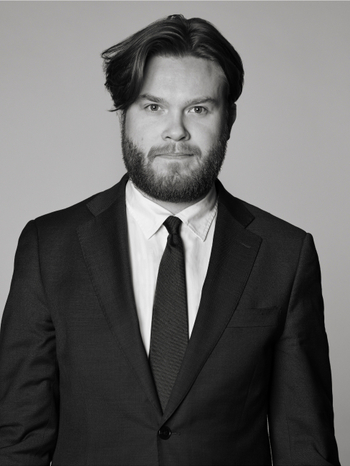Richard Bergh
Sketch for a Portrait of Gustaf Fröding
Mixed media on paper, image 53 x 43.5 cm.
Alkuperä - Provenienssi
The artist Alf Wallander's collection.
Muut tiedot
Richard Bergh's portrait of Gustaf Fröding from 1909 (currently in the Bonnier family portrait collection) is one of the most famous author portraits in Swedish art history. Karin Sidén writes about this in "Richard Bergh. Ett konstnärskall", 2002:
"In preserved letters, but also in article form, Richard Bergh has described his laborious and at times difficult work in portraying the then mentally ill poet Gustaf Fröding. The idea for the portrait originally came from Fröding's eldest sister Cecilia, whom Richard Bergh had met in 1904. […] At the hospital in Uppsala, Richard Bergh was fascinated by Fröding's distinctive appearance, his deep mental suffering and 'blue-white, far-seeing gaze' […] A few years later, in 1906, Richard Bergh revisited the idea of a portrait of Fröding, who was then admitted to Svenonii's sanatorium in Stockholm. […] The colour palette chosen for the final painting in the Bonnier family portrait collection at Nedre Manilla was the 'grey monotony, in which the brooding Fröding lived'."









































